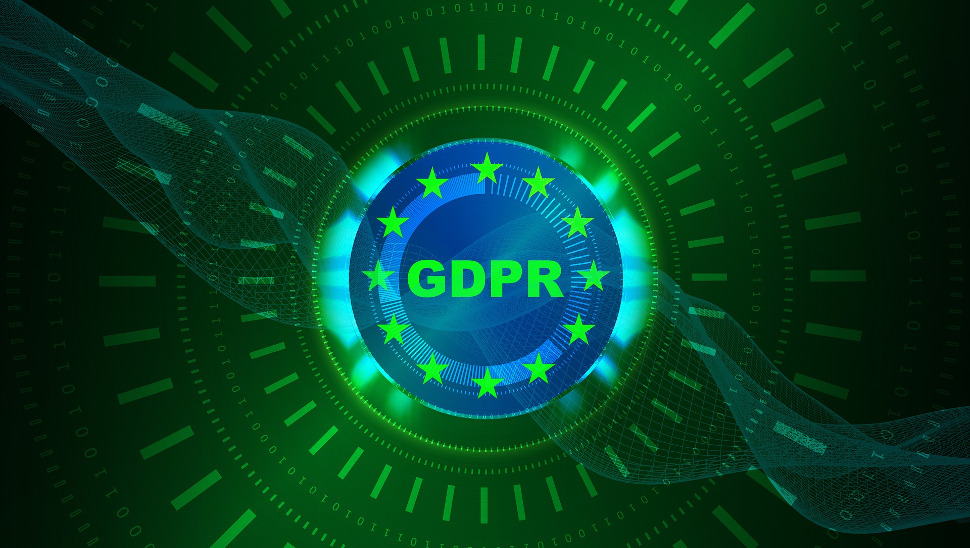In the real world, the best PC games can cost a lot of money. In some cases, they can do so without even keeping you engaged for a notable amount of time. Sometimes, a lot of games you pay for can lead to boredom – instead of solving it. Luckily, the best online games can do the trick.
Traditionally known as Flash or HTML games, these titles are made to keep you occupied while you’re working, or at home unemployed because you spent too much time playing the best online games. They’re essentially time killers. However, because they don’t really serve a purpose other than distracting you from the mundanity of everyday life, you won’t find any games that will change the way you look at the world.
That said, bearing in mind that the point of gaming is to be fun, the best online games do succeed in that regard. They range from mindless entertainment – such as Slither.io and Robot Unicorn Attack to grind fests like Runescape. No matter what it is you’re looking for, you’ll find something down your alley somewhere along the next 19 pages.
Gabe Carey also contributed to this article
Linux, Windows or Mac - which one is best for you? Watch our guide video below!
Not everyone is a fan of golf as a real-life event, but we think we can safely assume there's a spot in everybody's heart for golf if it’s a bit on the crazy side.
Wonderputt is a game that'll take you to the kind of mini golf courses you have only imagined with mini ski slopes, UFOs, lily pads and herds of sheep that eat the grass to uncover a new green for you to play on.
The game has a bit of a puzzle box design, so, even if you can see the whole course from the outset of the game, after you beat each hole it evolves and changes to become somewhat different and unmask new sections. It inspires a sense of awe, taking a game that's already fun in real life and adding a unique twist you'll only find in a game world.
If Frank Zappa developed video games, they would look something like Frog Fractions.
Created by Berkeley developer Jim Crawford, this game is an ode to the surrealist comedy of Jeff Minter and Ron Gilbert.
We don't want to get too deep into what Frog Fractions actually is because it's at its strongest when you go in with no clue of what's about to go down. It’s fair to say that, on the surface level, it appears to be a dumb and nondescript game. But, when you delve deeper, it has so much more to offer in the most crazy and hilarious ways possible.
Make sure you have the volume cranked to get the whole story.
Frog Fractions actually ended up being so successful that it spawned a sequel, though it released in the most Frog Fractions way possible: inside of another game. You can buy Glittermitten Grove on Steam today, wherein Frog Fractions 2 will live forever.
Bomberman on the original PlayStation was one of the best crafted and most addictive multiplayer games ever to be created. Game of Bombs seeks to emulate this virtual drug. And, as an added bonus, to get the multiplayer experience you'll no longer need to fish around a drawer of knotted cables for a MultiTap – just go to the website and play a gigantic version of Bomberman online with players from around the globe. Oh, the joys of the digital world!
This text-based online multiplayer zombie game is filled with little in-jokes. Upon starting the game you're greeted with the cheerful message "Be positive! You're going to die. Every time."
In the top right is actual server time and, when that hits 23:00, the zombies will come out to play. During the daylight hours, you and the other players must work together to build defenses for the following night reminiscent of Fortnite. This game is surprisingly involving and you'll constantly have to remind yourself that it's not really impacting your life but you'll definitely become invested in the online community.
If you haven't played any of Czech developer Amanita Design's games, then you are missing out on some of the quirkiest, funny and elaborate point-and-click puzzlers of recent memory.
The third game in this space-aged series is was released back on March 24 on Steam, but you can play the one that started it all back in 2003 for completely free. Chapter One of Samorost 2 is also online. And, be sure to check out their other games, Machinarium, Shy Dwarf and Botanicula.
Get ready to invest a lot of time into this one.This isn't your average top-down tower defence game; this is more like if you took Zelda and crossed it with Crash Bandicoot. Collect supplies, build bases and explore dungeons, you get the idea. It can be installed as an app from the Chrome Web Store or played online in any browser using HTML5.
Described by the developers as 'The Ultimate Tribute To The NES' most of the jokes will probably only ring true if you are above a certain age. But, that's not to say that younger people won’t find something to love here – if you appreciate a good toilet joke, you have a place here.
Written by the team behind the comedy website I-Mockery, it stars Abobo who is actually a standard recurring mid-boss in classic ‘80s beat-em-up Double Dragon. His son is kidnapped and he must battle his way through various NES-themed levels to rescue him. It's all done with warm affection to Mario, Zelda, Contra and Mega Man.
Do you like tanks? What about a good ol’ deathmatch? Well, if you answered ‘yes’ to either of those questions, Tanki might be the best online game for you. It looks a bit like an updated Quake – with tanks, of course – with several Deathmatch arenas, some covered in snow, others with various greenery. The goal is very similar to Quake as well: destroy all the tanks. There is a wide range of turret upgrades; leave enemies cold with the freeze gun or pound them repeatedly with the dual shot and rail gun.
Maneuvering the tank is a little wonky, but ultimately rewarding. The turret rotates separately from the base so it's possible to move one way while shooting in a completely different direction, much like a real tank. There are several game variants including Team Deathmatch and Capture The Flag. It looks great, too, kind of like a high-res PS2 or Dreamcast title.
A lot of popular Steam games and console titles owe their popularity to sites like Miniclip and Newgrounds, hosts to countless free-to-play titles from small studios with marginal publishing budgets.
Few of these success stories ring as true as Superhot, a first-person shooter developed in Unity where time comes to a standstill when you do, giving you plenty of time to form coherent strategies. In a sense, Superhot blends elements of both popular FPS games with turn-based strategy mechanics for a genuinely unique and fun browser-based experience.
It’s eat or be eaten in Slither.io, the HTML5 game where your cursor controls a reptilian long boy (also known as a snake) to eat dots in order to become an even longer boy. It’s much like Pac-Man, in that the goal is to eat as many dots as possible with the ultimate goal of winding up on a leaderboard. The challenge lies in the way of avoiding other snakes. Because if you touch one, you will die.
Your score is measured by the length of your snake, the longest of which, at the time writing, is about 20,000 points. If your snake makes its way into the top 10, it will then be featured prominently on the leaderboard. There isn’t much nuance beyond that, aside from the fact that you can change the skin outfitting your snake to one of several different colors and styles. It’s a simple game, but one that’s perfect for the workplace due to the lack of clicking required.
Just like Superhot earlier, Spelunky has humble origins. Developed originally by Derek Yu as freeware, then ported to the Xbox 360 in July 2012, the game was then ported to HTML 5 by Darius Kazemi (and made available as a chrome app). Spelunky may not be visually impressive, it was created in GameMaker after all, but its randomly generated levels and brutal permadeath mechanics make it a modern classic.
The goal of the 2D platformer is to collect as much loot as possible in a series of underground tunnels. Sounds easy, right? Wrong. Populated by obstacles like traps and enemies of various species, Spelunky's world is as challenging as it is addictive.
Luckily, by default, you're equipped with a whip and your own two feet with which you can besiege enemies. And, if that's not enough, you can always be resourceful and use surrounding objects as weapons. Good luck.
Runescape is a free-to-play massively multiplayer online role-playing game, and it may not seem that important on the surface, but it's actually a huge deal. Documented by the Guinness World Records, Runescape is known as the world's most popular free MMORPG, with over 200 million registered players, as well as the most frequently-updated game.
Like many MMOs, the latest version of Runescape – namely Runescape 3 – takes place in a medieval setting, filled with queens, goblins and, perhaps most importantly, dragons (and we can’t forget to mention the chickens). It's not exactly an example of fine art in terms of its visuals, but for a game that's been around for over 15 years how could it be?
As long as you're equipped with some recent edition of Java, you should be set to start fighting, trading and even playing mini-games with other players in the world of Gielinor. Be careful, though, as Runescape is infamous for being highly addictive.
If you recently played Doom, or are excited for the upcoming Wolfenstein II: The New Colossus, you may be wondering how developer id Software got its start. Well, look no further than Wolfenstein 3D. Though it wasn't the first title to come from superstar duo John Carmack and John Romero, Wolfenstein 3D was essentially the basis of the entire first-person shooter (FPS) genre.
Although it's a far cry from, well, Far Cry, Wolfenstein 3D is often considered the first true FPS by purists. Kill Nazis and see how gaming has improved since 1994 in this important snippet of history. Experience Wolfenstein 3D for yourself completely free of charge, courtesy of the Internet Archive.
There are few games as close to their source material as The Hitchhiker's Guide to the Galaxy. Created by the writer of the original novel, Douglas Adams, in conjunction with Infocom's Steve Meretsky, the game is more of a historical relic than a piece of software which stands the test of time.
A text-based adventure, The Hitchhiker's Guide to the Galaxy was originally released in 1984 for Apple II, MS-DOS and Commodore 64, among other platforms. Since it's only vaguely based on parts of the book, you're sure to have a unique experience that Douglas Adams so lovingly tailored to us so many years ago.
On the surface, Spaceplan is yet another repetitive clicking game designed as a means to distract you from the tasks at large. But dust off that geometrical cover and you'll realize there's something really special about this game.
If you're not one for games that take themselves too seriously, Spaceplan is for you. In fact, you spend most of your time fixing a ship using an interface called the "Thing Maker," which, as the name suggests, lets you build things to repair your ship and navigate through space. Once you get a few "things" up and running, the core game mechanic works on its own.
You'll spend most of your time waiting as you do other stuff (like your job, for example) as you accumulate watts used to power your things. It's the perfect game to keep open in another tab to poke at for a few seconds when your boss is looking the other way. The witty dialog is merely a bonus.
Our Instagram feeds may be filled with unicorn bagels, unicorn ice cream, and unicorn hair but the only thing we care about is unicorn robots.
Robot Unicorn Attack is a simple endless-runner that will hold your attention for hours. It's been popular online for a while and there's good reason for that. It's simultaneously stylish and silly but it's utterly addictive. Something that's helped by the inclusion of Erasure's 'Always' endlessly looping in the background. It should be grating but somehow it only improves the game.
You'll always want to be with it, and make believe with it, and live in harmony, harmony, and love.
You'll find it free to play right here.
If you’re a fan of indie music, then you’ve probably heard of Japanese Breakfast. This rising star of the indie scene, in promotion of her sophomore album, released this retro-styled turn-based RPG.
Not only does Japanese Breakquest have great music, as you would expect from a game ostensibly made by a musician, but it also has a ton of cool indie references scattered around that will delight anyone who is a fan of that kind of music.
The game basically expands on the story for Japanese Breakfast’s “Machinist” music video, wherein she is stuck on a spaceship, where she tries to build a mechanical body for her AI lover. It’s a little bizarre, but it’s lighthearted and fun throughout, and even has midi versions of all of the songs off of her 2017 album “Soft Sounds From Another Planet”
While the game’s target audience might be indie fans, there’s still plenty of charm that will affect anybody who plays it.
What do you get when you take a classic arcade game and make it controllable entirely through keyboarding skills? That’s right, you get ZType.
This deceptively brilliant browser game takes the simplistic formula of Asteroids, and replaces the joystick with your keyboard, spitting ships down at you that you can only take out by quickly typing the words attached to them.
It might sound easy but as the waves get higher and higher, the game only gets more difficult. This means that you’ll need to type quickly (and accurately) in order to make it to the higher levels. Eventually you’ll start getting extremely long words that’ll fire one-letter missiles at you that you have to take out in order to proceed.
Plus, I mean, you can legitimately use the excuse “it’s educational”. What’s not to love?
There aren’t a lot of story-driven browser games to choose from, so when one suddenly pops up, our interest is naturally piqued. A Dark Room is an homage to classic text-based adventure games, so its interface is primitive, but intentionally so.
Initially, the story takes you to a cold room where all you can do is light a fire and keep it going. Meanwhile, the text on the left side of the screen explains everything that’s going on around you, and eventually A Dark Room opens up more ways to interact with its heavy survival-based narrative.
Along the way, you’ll have to make choices that impact the events that take place in A Dark Room. Likewise, you’ll have to decide whether to keep playing or get back to work.
These days, its utility is limited to history classrooms for the most part, but The Oregon Trail still has a special place in our hearts. Originally released in 1971, The Oregon Trail was intended as an educational tool for students learning about the very real 19th century pioneers who famously surmounted the non-fictitious Oregon Trail.
Because it came bundled with the Apple II during the height of its success, The Oregon Trail is primitive in its graphics and gameplay, though it fundamentally operates much like a modern day survival game. You have to collect resources by hunting animals found throughout your journey, which extends from the Kansas River all the way to Willamette Valley.
In the end, the goal is to avoid subjecting yourself to the measles, snakebite, exhaustion, typhoid, cholera or – even worse – dysentery.
from TechRadar - Internet news https://ift.tt/23R09Xz
via
IFTTT









